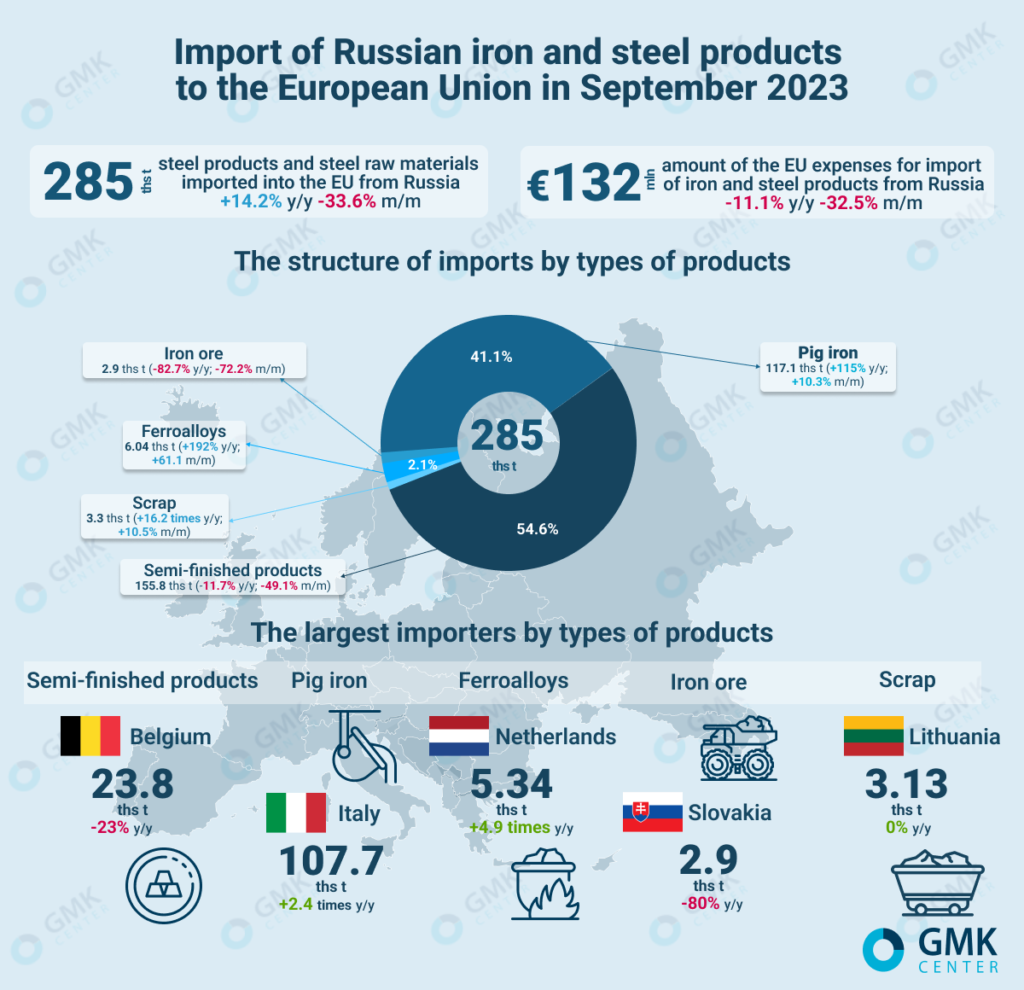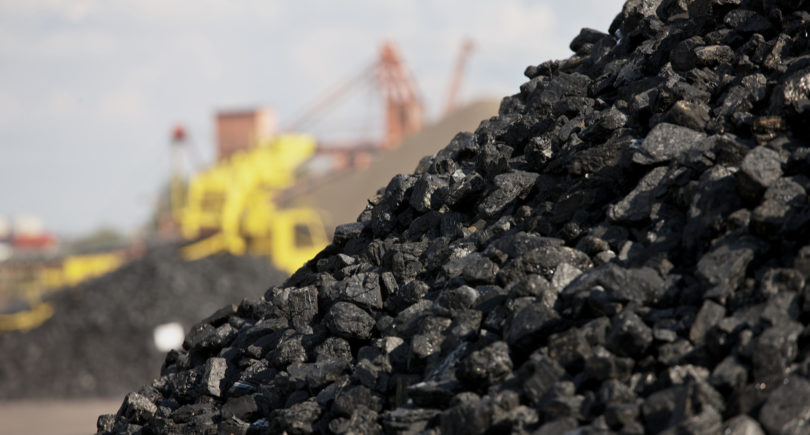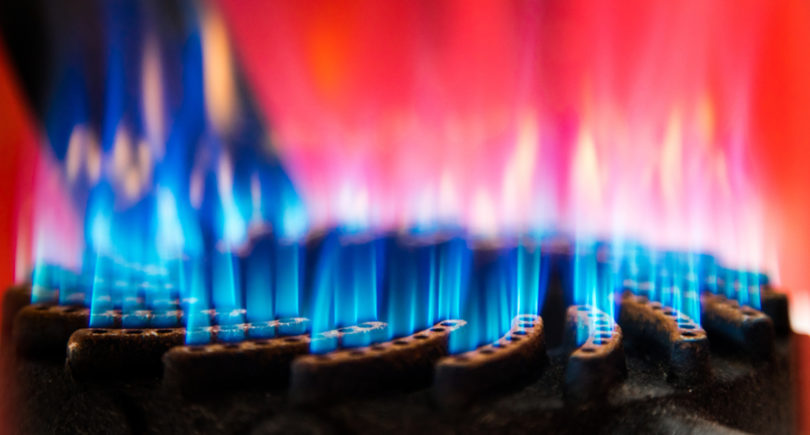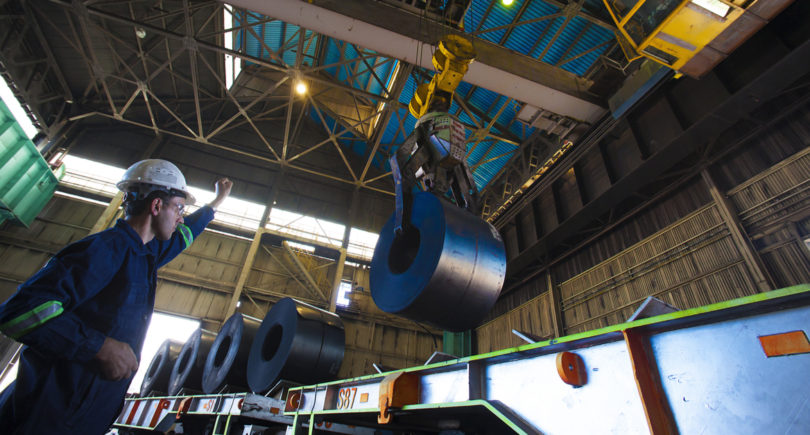
News Global Market EU 1160 22 November 2023
The main share of imports falls on semi-finished products – 54.6% of the total volume of deliveries
In September 2023, the European Union reduced imports of iron and steel products from Russia by 33.6% compared to the previous month – to 285.2 thousand tons. Compared to September 2022, the EU increased imports of such products by 14.2%. This is evidenced by Eurostat data.
The cost of imports of Russian products by European consumers in September amounted to €132.1 million, which is 32.5% less than in August 2023, and 11.1% less than in September 2022.
Semi-finished products accounted for the bulk of imports, accounting for 54.6% of the total supply. Supplies of such products from the Russian Federation to the European Union in September decreased by 49.1% m/m and 11.7% y/y – to 155.8 thousand tons. Most of the Russian-made semi-finished products were shipped to Belgium – 23.8 thousand tons (-23% y/y).
In September, iron ore supplies from Russia to the EU fell by 72.2% m/m and 82.7% y/y – to 2.9 thousand tons. Imports of pig iron amounted to 117.15 thousand tons, up 10.3% m/m and 2.1 times y/y, ferroalloys – 6.04 thousand tons (+61.1% m/m; 2.9 times y/y), and scrap – 3.3 thousand tons (+10.5% m/m).
In September, the main consumers of these Russian mining and metals products were:
- iron ore – Slovakia – 2.9 thousand tons (-80% y/y);
- pig iron – Italy – 107.73 thousand tons (+2.4 times y/y);
- ferroalloys – the Netherlands – 5.34 thousand tons (+4.9 times y/y);
- scrap – Lithuania – 3.13 thousand tons (not imported in August 2022).
In January-September 2023, the European Union reduced imports of steelmaking raw materials from Russia by 39% compared to the same period in 2022 – to 3.94 million tons. Import costs decreased by 39% y/y – to €1.97 billion.
Imports of semi-finished products decreased by 24% y/y – to 2.38 million tons, iron ore – by 85.5% y/y, to 324.46 thousand tons, ferroalloys – by 71.9% y/y, to 34 thousand tons, and scrap – by 64.8% y/y, to 26.74 thousand tons. Consumption of Russian pig iron increased by 32.4% y/y – up to 1.17 million tons.

Despite the sanctions imposed on Russia, the Russian iron and steel sector continues to make significant profits from exporting products to the European Union. Although the figures are down significantly compared to 2022, with exports amounting to 7.92 million tons worth €3.87 billion last year, supplies are still high.
Despite the sanctions, Russia still has loopholes that allow it to export steel to the EU. This was emphasized by Yuriy Ryzhenkov, CEO of Metinvest Group, in an interview with the Italian newspaper Corriere della Sera. On the one hand, the Russian steel industry is in a difficult situation in terms of market share. In October 2022, the EU imposed the eighth package of sanctions on Russia, including a ban on steel supplies to the EU. However, it provides for a two-year grace period for Russian producers to supply semi-finished products to the EU.




